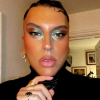
Creativebrief unveils the trends shaping modern marketing
The Industry Insights 2024 report explores the topics on marketing leaders minds today

What brands can learn from the Barbie school of brand experience

Legend has it that Greta Gerwig’s much-anticipated Barbie film required so much pink paint during construction that it wiped out an entire company’s global supply.
This claim might be as accurate as the historically flimsy yet widely accepted notion that Marie Antoinette declared: ‘Let them Eat cake’ as peasants starved in the midst of the French Revolution. (Sidenote: A limited edition Marie Antoinette Barbie was launched in 1997). Yet, both claims serve to add to the fizz of legend and myth-making.
For Barbie, this myth-making has already become the stuff of marketing legend. From the Barbie-pink billboards to the plethora of brand extensions Gerwig’s film and Mattel’s marketing team have already ensured the film’s place in marketing history.
The world may or may not run out of pink paint, but it certainly won’t run out of Barbie merch or brand innovations. With this in mind, we asked industry leaders what brands can learn from Barbie brand activations?

All of a sudden, everything is pink. While Barbiecore comes back into fashion every six to eight years, it was supercharged when stills of Margot Robbie from the upcoming film were released last year. But was the brand aware? And were they really listening to why and how people were engaging with their brand again? Could they use that information to help market their next product?
The answer to all of the above has been an emphatic yes. The marketing teams behind the new Barbie Movie launch have led a masterclass in understanding consumer attention and using it to choose brand partnerships.
From selfie generators to Barbie Dream Home tours with Margot Robbie, the brand has shown they know who their many audience segmentations are - or, as we call them, cohorts - and created tie-ins and experiences that appeal to them.
Barbie’s star had been waning. Even with an admirable push towards inclusivity the brand was still struggling for relevance. Now, even before the movie has launched, we’re seeing there are hundreds of ways for it to reach new audiences.
How to keep it going? Well, all the movie has to do is be as good as the marketing campaign. Not something our industry says very often.

Historically brands have spun out merchandise and experiences based on original intellectual property in the form of characters and scenes built up in films. Lego has built its product strategy around ‘themed’ sets based on the most popular movie franchises.
The hugely successful Barbie launch shows how its possible to go the other way - taking an iconic real world character, building a world around it and bringing it to life in film.
Experiences are a hugely lucrative business for any kind of ‘IP owner’. Fans of particular characters and worlds want to be able to experience them themselves. So whether you're Mattel maximising the Barbie brand, or Hasbro allowing people to step into a real life version of Monopoly, all IP owners should be thinking of innovative new ways to allow fans to step into their worlds - in real life and online.

Oh my goodness. Barbie! The wait is almost over for arguably the most anticipated film of the year. It is going to be a summer filled with Pantone 219C.
Getting to this point is not only testament to a stellar cast, credible director and franchise-focused CEO it’s because Barbie is a global mega brand. She’s got an instantly recognisable brand world, managed to stay relevant with a crystal clear mission and pretty much everyone has a point of view about her.
Unsurprisingly, there is a long list of businesses riding on the Barbie bandwagon but there are clearly some rules for doing it successfully.

The activity supporting the promotion of the hotly anticipated Barbie movie is that of legend. Very rarely do activations feel so completely on brand, from Margot Robbie’s perfectly matched outfits, to the pop up Barbie Cafe and Roller Skate rink - all with the touch of Barbie pink and humour that is tipped to be integral to the Greta Gerwig vision.
Barbie is a brand that is rooted in ‘Play’, an arena with an estimated value of $7.1bn, and a huge potential for both intimacy and scale. It is without a doubt that Barbie's marketing team has done a stellar job of incorporating ‘Play’ at the heart of every activation - and used it to their advantage, to engage and inspire a new generation of Barbie lovers. A smart move considering our research found that the notion of ‘Play’ can be transformative for consumers in this space.
The brand activations around the movie have been hailed a marketing masterclass. And anyone can see why, with the film engaging even the biggest sceptics, and audiences both old and new. From the use of relevant cultural references to Love Island in Margot Robbie and Ryan Gosling’s TikTok cameo, to collaborations with Xbox, and of course the standout Airbnb partnership with the Malibu Dreamhouse, the campaign has certainly been causing a buzz. What I would give to have a Barbie party there!

Barbie's role as a true influencer and creator has been cemented through the spotlight she has shone on finding the right partners. By collaborating with various brands and organisations, Barbie has expanded her reach and engaged with new spaces and audiences. These partnerships can be categorised into two types: those that are expected and align with Barbie's established brand universe, and those that stretch her reach and the consumer imagination into new territories.
When it comes to more typical partnerships, Barbie has joined forces with brands that have a natural synergy with her image and values, such as NYX cosmetics and OPI nails. These collaborations allow both brands to build on their shared target audience and create products that appeal to Barbie fans and beauty enthusiasts alike. Contrastingly, Barbie has also sought out partnerships that stretch her reach and imagination to new spaces and audiences. These are creative partnerships outside of the expected but curated in a way that feels very authentic to Barbie. The collaborations are mutually beneficial to both audiences; we see a convergence of two audiences centred on an activation that shows the best of Barbie and the best of the other brand/ influencer. Examples of this can be seen in her collaborations with Airbnb and Béis. Barbie's Airbnb listings, which feature life-sized Dreamhouses, offer fans the chance to stay in a Barbie-themed environment, immersing themselves in the Barbie brand and lifestyle, Another noteworthy collaboration is with the brand Béis, founded by influencer and entrepreneur Shay Mitchell. Béis specialises in travel accessories, and the partnership with Barbie further expands her presence into the trending space, just like an influencer collaboration would. These collaborations not only introduce Barbie to Béis' audience but also showcase Barbie's creator versatility as a doll/ brand that can seamlessly fit into different lifestyle contexts.

“Obviously artificial, but still very satisfying.” Margot Robbie said in the Barbie Dreamhouse tour for Architectural Digest. Yes, you read right, Architectural Digest. There seems to be nothing too highbrow, nothing too lowbrow, nothing too obvious, nothing too obscure for Barbie-mania.
This begs the question, does it matter? There’s no doubt we would have expected a big marketing push for this movie, but I believe that by taking down the limits of ‘does it make sense?’ is making Barbie the cultural icon of 2023.
Mattel has looked way outside of its obvious audience and is doing a damn good job creating relevance in wider audiences. Creating intrigue, creating relevance. Hell, just creating curiosity - what is actually IN this movie?
We’ll see the proof in the opening weekend numbers (I’m going, I can tell you that much) and whether Barbie is around in 60 years time. But, I think Mattel just set us a best-in-class, lateral, obscure, brilliant example of a way to keep a 60 year old brand relevant. And let’s face it, Barbie’s destiny wasn’t always so bright (pink).

The success of the Barbie activations stems from the film's 360 approach to immersive world-building. No matter where fans are, people gravitate towards the fantastical universe crafted around Barbie and its hyperrealist appeal.
The launch of the Barbie movie and its activations coincides with a series of cultural undercurrents that are driving its success:
Omnichannel presence and coherence are great takeaways for brands. No matter who Mattel and Barbie have partnered with along the movie launch tour, they've remained flexible to adapt to different cultural undercurrents, environments and occasions but truthful to the overarching visions of the Barbie world.

As a brand, Barbie has been taking strides to be more inclusive, and to evolve, since she was born in 1959. We’re seeing similar trajectories in influencer marketing, and there is a lot for brands to draw inspiration from.
Mattel’s marketing has all the ingredients for a brilliant brand and campaign. A diverse portfolio of product partnerships; utilising trends such as AI to make her more interactive and simply tapping into cultural territories that unite different generations. What does that mean? She’s here to stay.
Looks like you need to create a Creativebrief account to perform this action.
Create account Sign inLooks like you need to create a Creativebrief account to perform this action.
Create account Sign in